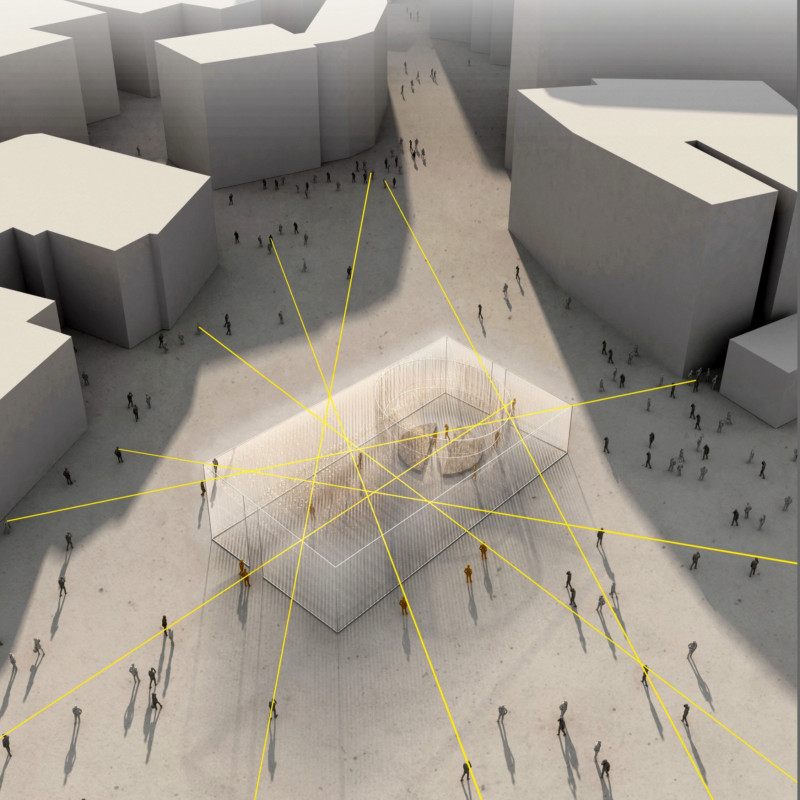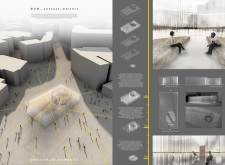5 key facts about this project
The Pavilion of Humanity is located in an urban setting, specifically designed to improve human interaction and communication. The concept focuses on the importance of eye contact, seen as a natural and crucial way to connect with others. By existing in a busy city, the pavilion aims to serve as a public space that reflects modern values surrounding personal relationships and shared experiences.
Design Concept
The structure features a cuboid shape that resembles many traditional buildings in the city. Yet, it stands out with its unique design. This choice helps the pavilion attract attention and engage those who walk by. The design creates a relationship with its surroundings, inviting visitors to explore its diverse features.
Spatial Interaction
Vertical aluminum elements define the pavilion. They are arranged to encourage people to observe and engage with one another. This setup breaks the usual lines of sight, allowing for more immediate and personal interactions. By seeing each other clearly, participants can connect on a deeper level, helping to foster a sense of belonging.
Central Gathering Space
At the center of the pavilion is a seating area made up of two semicircular stone seats. These seats are thoughtfully placed to promote face-to-face conversations. In an age where meaningful discussions are often lacking, this configuration encourages visitors to pause, share, and interact. The seating area serves not only as a spot for conversation but also as a moment of quiet reflection in the midst of city life.
Pathways to Connection
Visitors find two pathways leading to the central seating area. These routes enrich the journey as individuals approach the space. As they move along the paths, they have the chance to see themselves through openings in the structure at eye level. This design element heightens the experience of anticipation, reinforcing the significance of direct communication in a world that often feels isolated.
The Pavilion of Humanity is a well-crafted environment for engaging with others. Its thoughtful design, with layered spatial relationships and clear pathways, emphasizes the importance of connection and community in an increasingly disconnected society.



















































